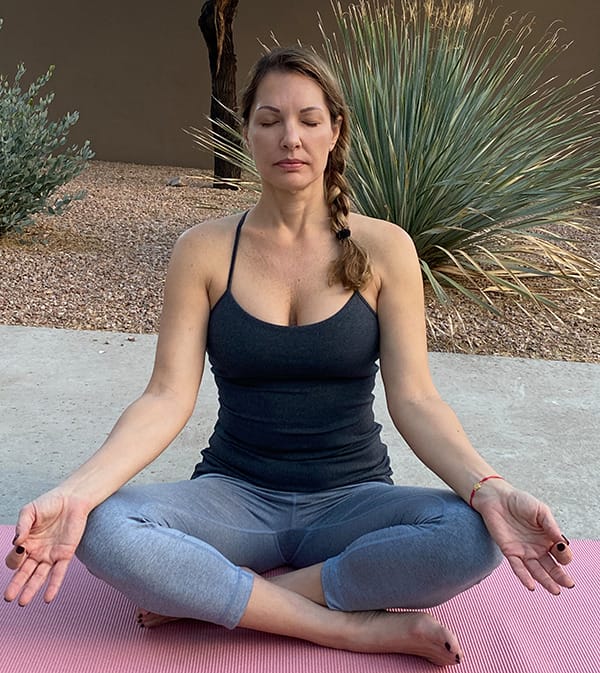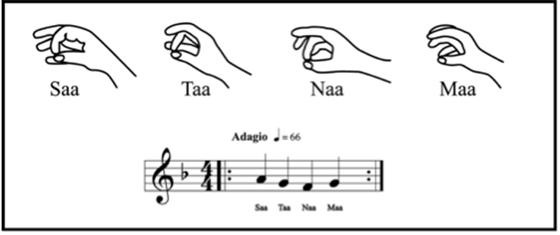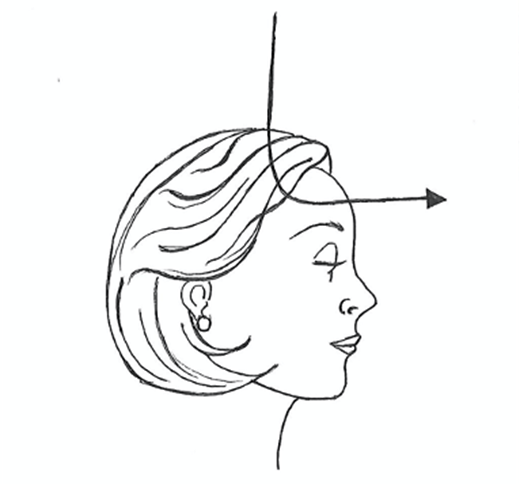Most of us understand the basic mechanics of yoga. It is a system of physical postures and breathing exercises that promote well-being and the calming of the mind. The literal meaning is “merging two into one.” Yoga is picking up speed within the dental community to help with career stress and helping to reduce the physical pain that may accompany practicing dentistry.
Kirtan Kriya
One of the practices of yoga is called Kundalini yoga that involves chanting, singing, breathing exercises, and repetitive poses. Its purpose is to activate your Kundalini energy or shakti. This is a spiritual energy, and the concept has been around for centuries. A practice of yoga and meditation you may not have heard about is Kirtan Kriya (KK). When I was doing coursework for my Brain Longevity therapy training, I was introduced to KK. The Alzheimer’s Research and Prevention Foundation has been researching yoga/meditation as a preventive measure to Alzheimer’s disease since 2003, and the results of numerous studies of KK showed that a simple 12-minute yoga meditation has the following benefits:1-9
- Reduce stress
- Improves sleep
- Reverses memory loss
- Increases energy levels
- Upregulates positive genes
- Increases telomerase by 43%
- Decreases anxiety and depression
- Improves psychological well-being
- Enhances neurotransmitter function
- Increases blood flow to significant brain areas
- Reduces some risk factors for Alzheimer’s disease
- Down regulates the genes that cause inflammation
Even though this practice speaks directly to Alzheimer’s prevention, the benefits are important in all aspects of our life and is picking up steam in the west. Author Guru Rattana, Ph.D., calls it “the most important meditation in Kundalini Yoga.” Improving the quality of our lives and also increasing healthy longevity is what we all strive for.
Kirtan Kriya meditation is a form of meditative practice that is associated with Kundalini yoga. It involves focused breathwork, singing or chanting (also whispering), finger movements called “mudras” and visualization. The chanting mantra is Sa Ta Na Ma and is Sanskrit. The name Kirtan Kriya comes from kirtan that means “praise” or “sing,” and kriya means “act” or “action.”
A unique part of this practice is in the mechanism of benefits that, as a dental hygienist, I appreciated. It stimulates 84 acupuncture meridian points on the roof of the mouth, sending signals to the hypothalamus, pituitary, and brain. It rejuvenates brain synapses by increasing important brain chemicals such as acetylcholine, norepinephrine, and dopamine. The fingertips, lips, and tongue are highly represented in the motor and sensory areas of the brain. Therefore, when utilizing fingertips in conjunction with the sounds, many areas of the brain are activated. Moreover, each aspect of KK stimulates separate parts of the brain. The visualization activates the occipital lobes of the brain, both on a physical level and on an emotional level.

How to Practice Kirtan Kriya!
- Sit comfortably in a chair with your feet flat on the floor or sit on the floor with legs crossed.
- Close your eyes and focus on your breathing, simply to get you focused.
- Keep your hands on your knees, arms extended away from the body with palms facing the ceiling.
The chant or mantra Sa Ta Na Ma is to the melody of the first four notes in the first line of Mary had a Little Lamb. The mudra or finger movements are as follows:
- Touch your index finger with your thumb, saying “Sa” aloud.
- Touch your middle finger with your thumb, saying “Ta” aloud.
- Touch your ring finger with your thumb, saying “Na” aloud.
- Touch your pinky with your thumb, saying “Ma” aloud.

Kirtan Kriya Visualization
At every syllable (sound), visualize the sounds like the capital “L.” The sound starts in the center of the top of your head then moves out the middle of your forehead in a sweeping motion, looking similar to a capital L.

Kirtan Kriya Sequence
Sing “Saa” “Taa” “Naa” “Maa” while touching your fingers of both hands at the same time; visualize the sound flowing in through the top of your head and out the middle of your forehead in an L shape.
- For two minutes, singing it out loud.
- For the next two minutes, singing it in a stage whisper.
- For the next four minutes, saying the sound silently to yourself and continue tapping your fingers.
- Then whispering for two minutes.
- Then out loud for two minutes, for a total of 12 minutes.
At the End
Inhale deeply, stretching your arms up high above your head, then bring your hands down slowly in a sweeping motion with the exhale.
I’m not a yogi, but I do enjoy yoga and the wealth of benefits that come from meditation. Having a shortened option in meditation that has proven advantages is worth a try. We can all enjoy dabbling in different exercises of the body and the mind. Namaste.
Now Listen to the Today’s RDH Dental Hygiene Podcast Below:
References
- Newberg, A.B., Wintering, N., Khalsa, D.S., Roggenkamp, H., Waldman, M.R. Meditation effects on cognitive function and cerebral blood flow in subjects with memory loss: a preliminary study. J Alzheimers Dis. 2010; 20(2): 517-26. doi: 10.3233/JAD-2010-1391. PMID: 20164557. Retrieved from https://pubmed.ncbi.nlm.nih.gov/20164557/.
- Lupien, S.J., Fiocco, A., Wan, N., Maheu, F., Lord, C., Schramek, T., Tu, M.T. Stress hormones and human memory function across the lifespan. Psychoneuroendocrinology. 2005 Apr; 30(3): 225-42. doi: 10.1016/j.psyneuen.2004.08.003. PMID: 15511597. Retrieved from https://pubmed.ncbi.nlm.nih.gov/15511597/.
- Khalsa, D.S., Amen, D., Hanks, C., Money, N., Newberg, A. Cerebral blood flow changes during chanting meditation. Nucl Med Commun. 2009 Dec; 30(12): 956-61. doi: 10.1097/MNM.0b013e32832fa26c. PMID: 19773673. Retrieved from https://pubmed.ncbi.nlm.nih.gov/19773673/.
- Lavretsky, H., Epel, E.S., Siddarth, P., Nazarian, N., Cyr, N.S., Khalsa, D.S., Lin, J., Blackburn, E., Irwin, M.R. A pilot study of yogic meditation for family dementia caregivers with depressive symptoms: effects on mental health, cognition, and telomerase activity. Int J Geriatr Psychiatry. 2013 Jan; 28(1): 57-65. doi: 10.1002/gps.3790. Epub 2012 Mar 11. PMID: 22407663; PMCID: PMC3423469. Retrieved from https://pubmed.ncbi.nlm.nih.gov/22407663/.
- Newberg, A.B., Wintering, N., Waldman, M.R., Amen, D., Khalsa, D.S., Alavi, A. Cerebral blood flow differences between long-term meditators and non-meditators. Conscious Cogn. 2010 Dec; 19(4): 899-905. doi: 10.1016/j.concog.2010.05.003. Epub 2010 Jun 8. PMID: 20570534. Retrieved from https://pubmed.ncbi.nlm.nih.gov/20570534/.
- Black, D.S., Cole, S.W., Irwin, M.R., Breen, E., St Cyr, N.M., Nazarian, N., Khalsa, D.S., Lavretsky, H. Yogic meditation reverses NF-κB and IRF-related transcriptome dynamics in leukocytes of family dementia caregivers in a randomized controlled trial. Psychoneuroendocrinology. 2013 Mar; 38(3): 348-55. doi: 10.1016/j.psyneuen.2012.06.011. Epub 2012 Jul 15. PMID: 22795617; PMCID: PMC3494746. Retrieved from https://pubmed.ncbi.nlm.nih.gov/22795617/.
- Boyle, P.A., Buchman, A.S., Bennett, D.A. Purpose in life is associated with a reduced risk of incident disability among community-dwelling older persons. Am J Geriatr Psychiatry. 2010 Dec; 18(12): 1093-102. doi: 10.1097/JGP.0b013e3181d6c259. PMID: 20808115; PMCID: PMC2992099. Retrieved from https://pubmed.ncbi.nlm.nih.gov/20808115/.
- Innes, K.E., Selfe, T.K., Brown, C.J., Rose, K.M., Thompson-Heisterman, A. The effects of meditation on perceived stress and related indices of psychological status and sympathetic activation in persons with Alzheimer’s disease and their caregivers: a pilot study. Evid Based Complement Alternat Med. 2012; 2012: 927509. doi: 10.1155/2012/927509. Epub 2012 Feb 21. PMID: 22454689; PMCID: PMC3292237. Retrieved from https://pubmed.ncbi.nlm.nih.gov/22454689/.
- Moss, A.S., Wintering, N., Roggenkamp, H., Khalsa, D.S., Waldman, M.R., Monti, D., Newberg, A.B. Effects of an 8-week meditation program on mood and anxiety in patients with memory loss. J Altern Complement Med. 2012 Jan; 18(1): 48-53. doi: 10.1089/acm.2011.0051. PMID: 22268968. Retrieved from https://pubmed.ncbi.nlm.nih.gov/22268968/.












